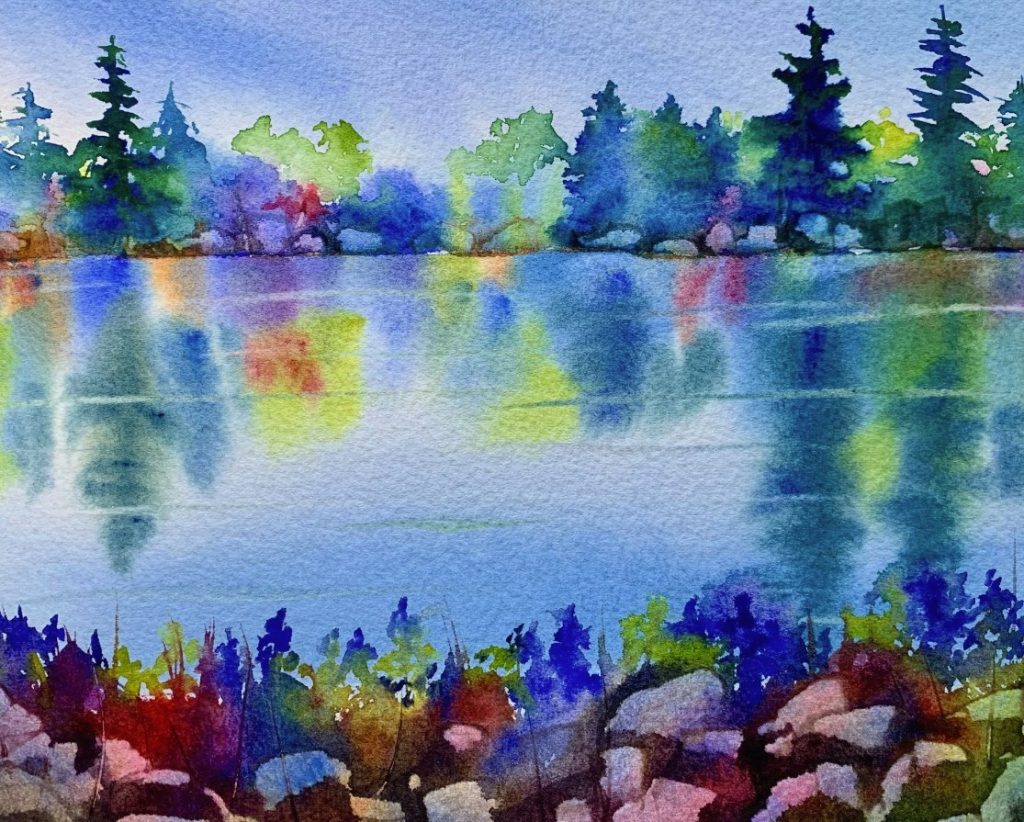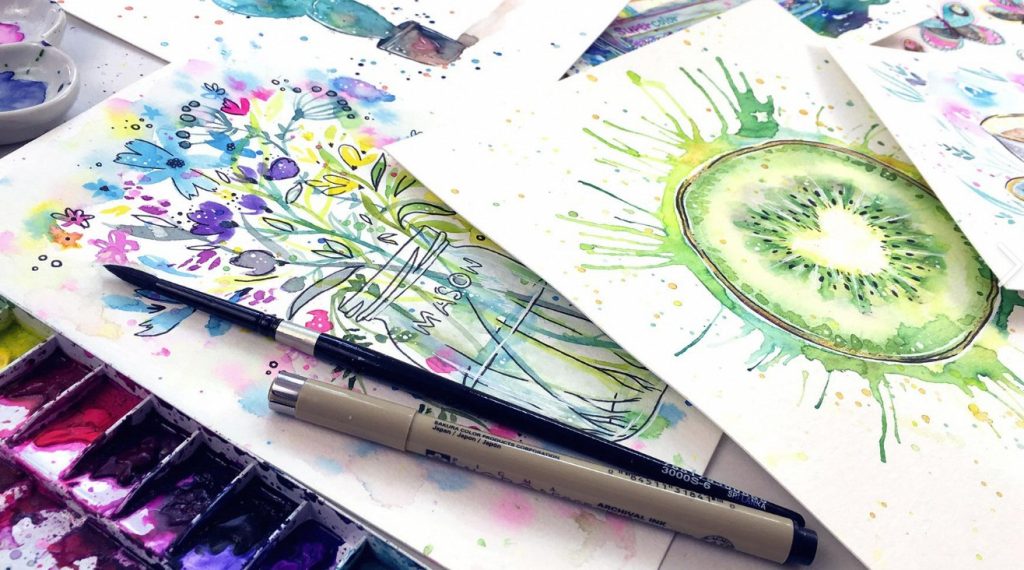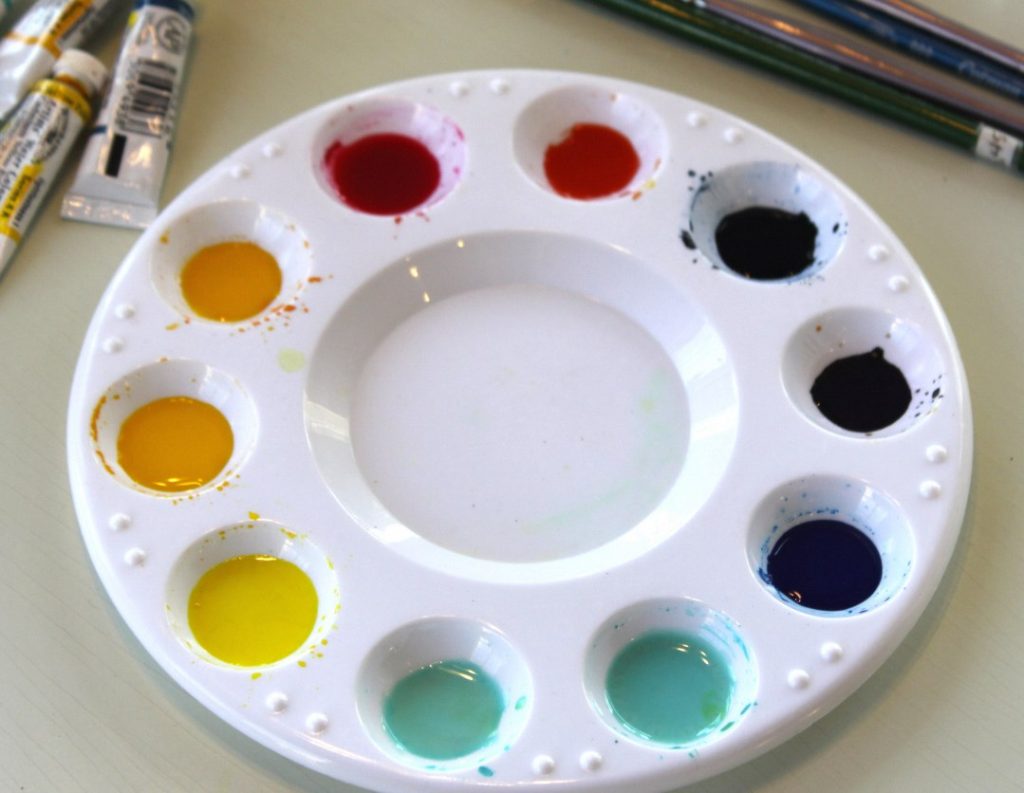Watercolor paints, famed for their delicate washes and translucent vibrancy, are traditionally used on paper. However, adventurous artists are pushing boundaries and exploring new techniques. This article delves into the world of watercolor on canvas, a unique approach that yields captivating results.

Part 1: Understanding the Canvas – A Departure from Tradition
Beyond Paper – Embracing Canvas Texture:
Unlike the smooth surface of watercolor paper, canvas offers a distinct textural quality. This texture can interact with the watercolor washes, creating interesting effects and adding depth to your artwork. Experiment with different canvas weaves – fine, medium, or rough – to see how they influence the flow and texture of your paints.
Preparing the Canvas – Gesso for Watercolor Adhesion:
While watercolor paints can be applied directly to raw canvas, it’s highly recommended to prepare the surface first. A layer of gesso, a white acrylic primer, creates a barrier and improves the adhesion of watercolor paints to the canvas fibers. Multiple thin coats of gesso are ideal, allowing the canvas texture to show through slightly.
Part 2: Watercolor Techniques with a Twist – Adapting to Canvas
Wet-on-Wet Magic with Nuance:
The wet-on-wet technique, a cornerstone of watercolor painting, can be used on canvas, but with some modifications. Since canvas absorbs water less readily than paper, you might need to use more water or work a little faster to achieve seamless blending. Experiment with different dilutions and brushwork to find your ideal approach.

Layering and Glazing – Building Depth with Patience:
Layering thin washes of color and utilizing glazing techniques can be particularly effective when working with watercolors on canvas. It’s important to allow each layer to fully dry before adding the next, as this prevents colors from becoming muddy and ensures the transparency and luminosity of the watercolors are preserved. The texture of the canvas also plays a significant role, as it can subtly interact with the watercolor layers, adding depth and complexity to the overall appearance of the painting. The canvas texture creates subtle variations within each layer, contributing to a unique sense of depth and visual interest in the artwork. By carefully navigating the interplay between watercolor and canvas texture, artists can achieve captivating and dynamic effects, adding an extra layer of depth and complexity to their watercolor paintings on canvas.
Part 3: Embracing the Unexpected – Exploring Unique Effects
Textural Play – Harnessing the Canvas Weave:
In watercolor painting, the canvas texture can be seen as a collaborator, influencing the interaction between the paint and the surface. Allowing the washes of color to interact with the weave of the canvas can yield unexpected and visually captivating results. As the watercolor pigments come into contact with the textured surface, they may pool or break in unpredictable ways, creating unique patterns and textural variations that add depth, visual interest, and a sense of movement to the artwork. The canvas texture becomes an integral part of the creative process, contributing to the overall aesthetic and character of the watercolor painting. By embracing the innate qualities of the canvas and understanding how the paint behaves in relation to its surface, artists can leverage these textural variations to enhance the expressive and dynamic qualities of their watercolor artworks, resulting in visually compelling and textured pieces.

Granulation Magic and Canvas Effects:
Certain watercolors, when diluted, exhibit granulation – the formation of separate pigment particles. On canvas, this effect can be particularly captivating. The canvas texture can influence the distribution of these granules, creating unique visual textures within your washes.
Part 4: Beyond Basic Techniques – Experimentation is Key
Mixed Media Marvels – Watercolor and Acrylic Fusion:
Watercolor on canvas offers an enticing avenue for exploring mixed media art. By incorporating acrylic paints, artists can introduce bold shapes or opaque elements that contrast with the translucent nature of watercolors. The versatility of acrylic paints allows for the creation of striking visual elements that enhance the dynamism of the artwork. Additionally, experimenting with acrylic inks can yield vibrant washes that maintain their intensity and luminosity on the canvas surface. This combination of watercolor, acrylic paints, and inks provides an opportunity to explore the interplay between diverse mediums, leading to the creation of unique effects and visual textures. By understanding how these different mediums interact, artists can unleash their creativity and broaden the expressive possibilities of their artworks.
Watercolor Pencils and Drawing Integration:
Watercolor pencils can be a valuable and versatile addition to your toolkit, especially when working on watercolor paintings on canvas. They serve various purposes, such as creating preliminary sketches, adding delicate details, or introducing areas of concentrated color with precision and control. Utilizing watercolor pencils on canvas allows for a flexible approach, enabling artists to achieve fine lines, intricate patterns, and specific color placement. Adding water to the pencil lines using a brush can yield captivating effects, as the pigments dissolve and blend with the canvas surface, creating interesting bleeds, soft transitions, and unique textural variations. This technique can expand the creative possibilities of the artwork, adding depth and complexity to the overall composition.

Part 5: Maintaining Your Masterpiece – Care for Canvas Watercolors
Varnishing for Protection:
Once you have completed a watercolor painting on canvas and it has thoroughly dried, you may want to consider applying a protective coat of varnish. It’s crucial to select a water-soluble varnish specifically designed for watercolor paintings on canvas. This type of varnish not only offers protection from dust and moisture but also helps to shield the artwork from potential UV light damage. By applying a suitable varnish, you can safeguard the delicate watercolor pigments, ensuring the longevity and integrity of your artwork. The varnish acts as a protective barrier, preserving the colors’ vibrancy and preventing potential discoloration or fading over time. Additionally, the varnishing process can enhance the overall appearance of the painting by providing a subtle sheen, further enriching the visual impact of the artwork.
Display Considerations – Protecting from Moisture:
Watercolor paintings, even on canvas, are susceptible to moisture damage. Avoid displaying your artwork in areas with high humidity or direct sunlight. Framing your canvas with a mat will provide an extra layer of protection.

Watercolor on canvas offers a unique artistic adventure. Embrace the textural interplay, experiment with techniques, and enjoy the unexpected effects that arise. With practice and exploration, you can create stunning watercolor paintings that transcend the traditional boundaries of paper and capture the essence of your artistic vision.


